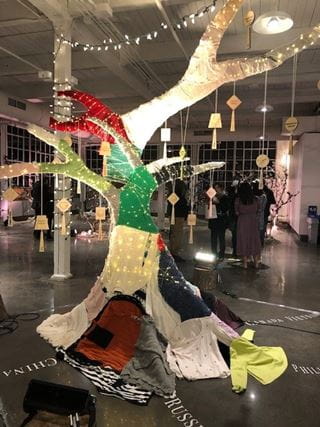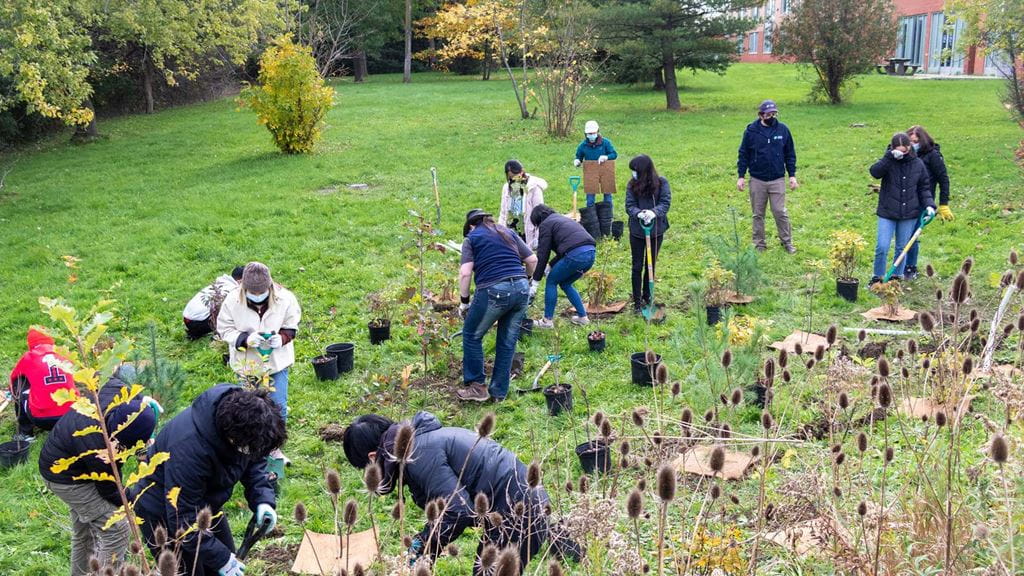
Planting seeds for growth: Sheridan’s Davis campus goes ‘au naturale’
 by Cameron Wood – Apr 19, 2022
by Cameron Wood – Apr 19, 2022 As spring begins to take root, Sheridan’s Office for Sustainability is particularly excited to see the return of lush colours to the Davis campus. Last year, a number of initiatives planted the seeds for new growth at the Brampton campus – and will enrich the campus’ biodiversity through a variety of revitalized colourful gardens, hundreds of new trees, and enhanced natural spaces.
“The plants are still small,” says Nathan Nettleton, project technologist in Facilities and Sustainable Infrastructure (FSI). “But they will fill out. We’re looking forward to spring.”
Nurturing healthy campus ecosystems is an integral part of Sheridan’s Mission Zero mandate, and the broader sustainability goals captured in Sheridan’s Strategic Plan. Part of the focus at the Davis Campus has been to reintroduce native plants such as Black Eyed Susan, Early Goldenrod, River Birch and Maidenhair Fern, among many others – those that occur naturally in a region in which they evolved. They are the ecological basis upon which life depends, including birds and people. Without them and the insects that co-evolved with them, local birds cannot survive.
“A large native planting expands the natural areas of the campus to create healthier habitats for local wildlife.”
– Deborah Kenley, Greening Corporate Grounds senior coordinator, Credit Valley Conservation (CVC)
In 2021, three gardens at the Davis Campus underwent revitalization, along with hydroseeding (using a liquid mix of seeds and mulch) with perennial plant mixes in other natural spaces at the campus. This also included the challenging work of first removing invasive species – such as buckthorn, hogweed and garlic mustard – to create the growing space needed to support healthy plant diversity.
Nettleton attests that controlling invasive species can be a labour-intensive, long-term effort. “Left alone, plants like garlic mustard can double in size every four years,” he says. “Buckthorn can form dense thickets that crowd and shade out native plants.”
The FSI Operations team also found creative ways of giving new life to old or decaying trees that had to be removed as part of campus revitalization projects. Rather than removing dead or dying ash trees completely from the Davis Campus last year, Nettleton explains that the team kept some of the tree trunks in place, and instead drilled hollows within them to create roosting environments for birds and small animals. Additionally, some were felled into the Davis pond to enhance turtle habitats. Eventually nature will reclaim these trees as they age and decay, but in the meantime, they serve to support other aspects of the local ecosystem.
More work is planned for rejuvenation of the pond under a much bigger initiative.
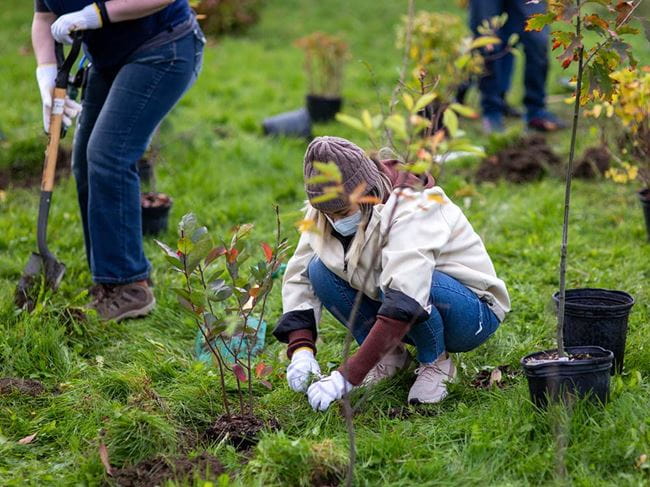
Community Partnerships
Sheridan has also partnered with Credit Valley Conservation (CVC) on its Greening Corporate Grounds program to develop a sustainable landscaping action plan for the Davis Campus. The Brampton campus is located within the Community Tree Project neighbourhood – a community-based project to cool local neighbourhoods from the impacts of climate change.
CVC launched the project in 2021 with funding from Canada’s Climate Action and Awareness Fund. The project works at the neighbourhood level to build resilience to climate change, and reduce the heat island effect — where urban areas experience higher temperatures than the regions around them— by planting trees on public and private property.
The partnership culminated in a large-scale native tree and shrub planting in October 2021, which saw volunteers from Sheridan’s Mission Zero plant 129 native trees and shrubs like red oak, American basswood, serviceberry and smooth rose at the Davis Campus. An additional 350 plants were installed by ecological contractors for a total of 479 planted on campus.
“Working with our neighbours and different associations towards this common goal is really good for Sheridan, for our students, and for our fellow community.”
– Nathan Nettleton, project technologist in Facilities and Sustainable Infrastructure (FSI)
“A large native planting expands the natural areas of the campus to create healthier habitats for local wildlife,” says Greening Corporate Grounds senior coordinator, Deborah Kenley. “It also provides cool and calming spaces for students and the broader community to enjoy and connect with nature.”
“Building partnerships like the one we have with the CVC is important,” says Nettleton. “Working with our neighbours and different associations towards this common goal is really good for Sheridan, for our students, and for our fellow community. We’re building relationships, we’re bringing our community into our campus, and that benefits everyone.”
Helping our community set and meet net-zero targets
Herb Sinnock, Sheridan’s Director of Sustainability, will participate in a panel session at the Brampton Board of Trade’s inaugural Energy & Environment Forum on April 21, 2022 that will focus on how organizations can kick-start their transition to net-zero emission and waste targets. Sinnock will discuss the meaning and relevance of net-zero targets and the factors driving them and share concrete ideas and takeaways that local businesses can incorporate into their strategic plans. Register for the Energy & Environment Forum here.
Connect with the Mission Zero team through social media or missionzero@sheridancollege.ca.
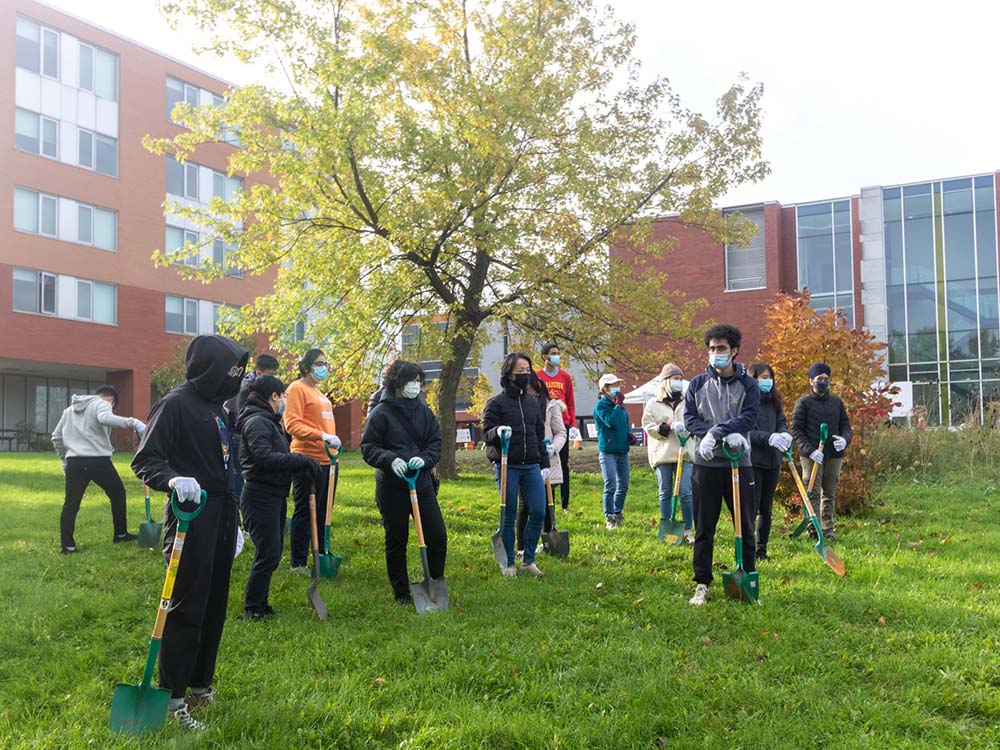
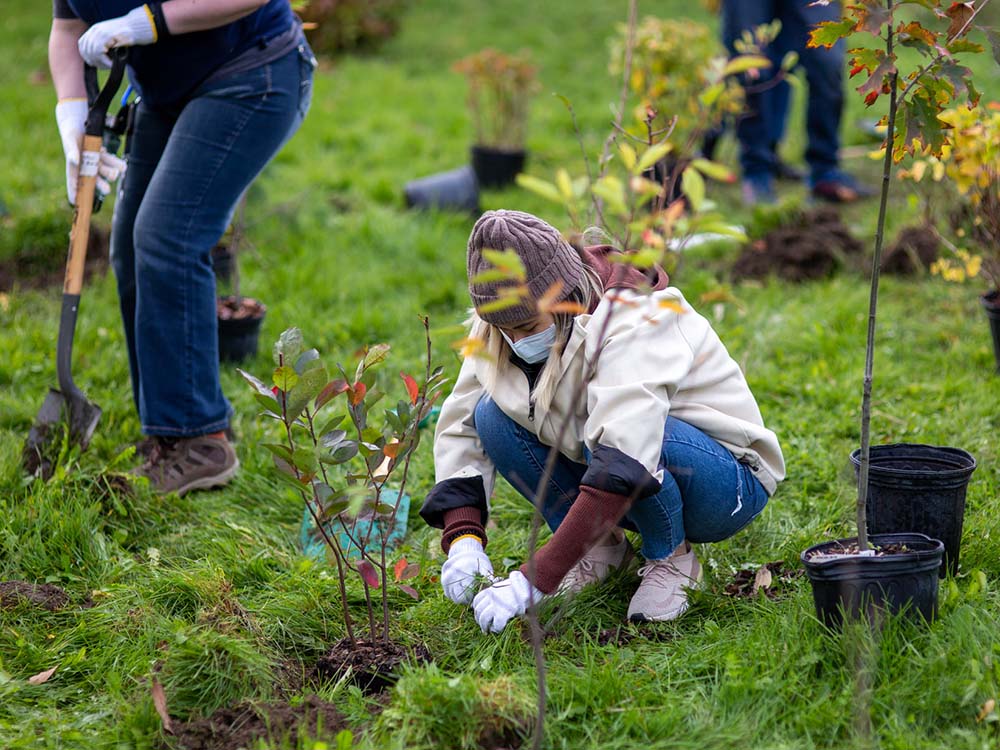
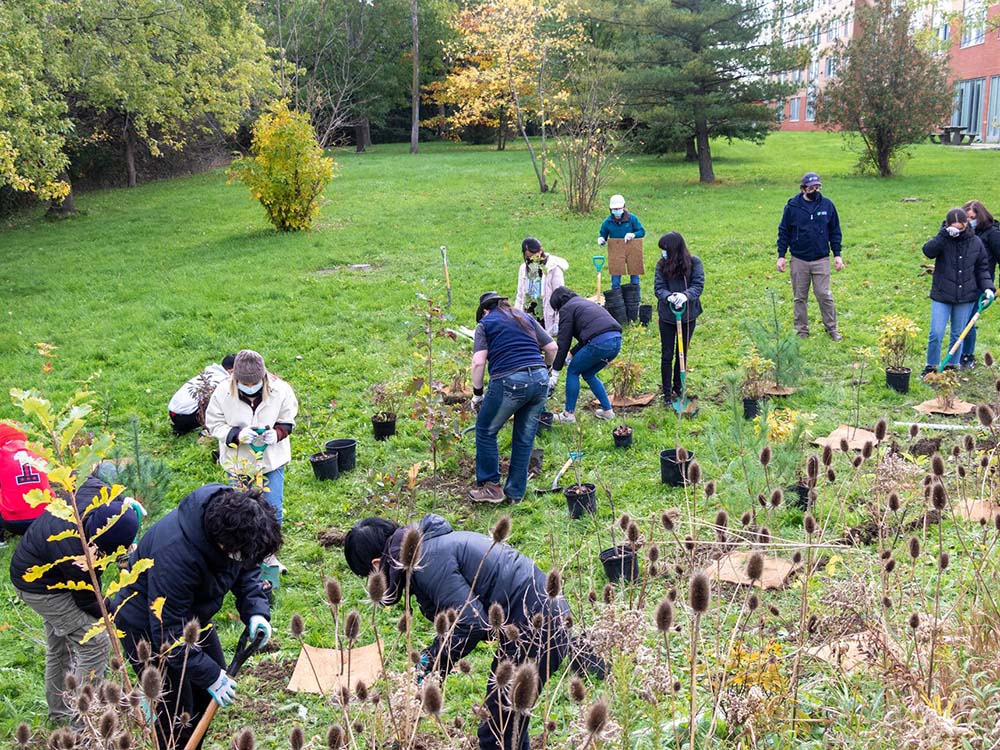
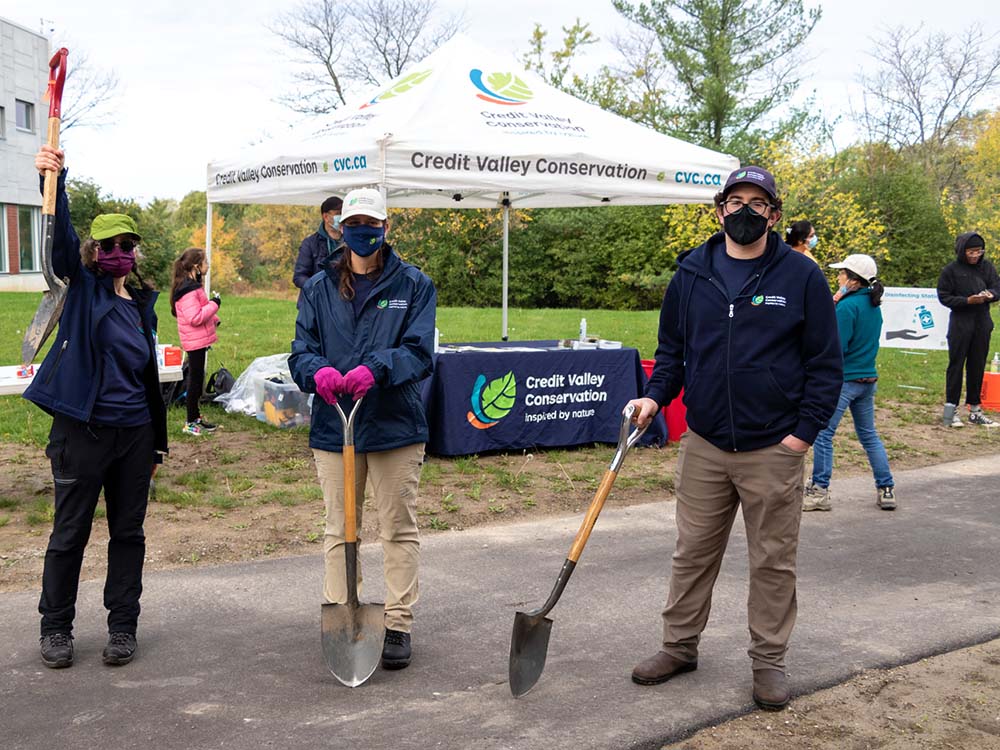
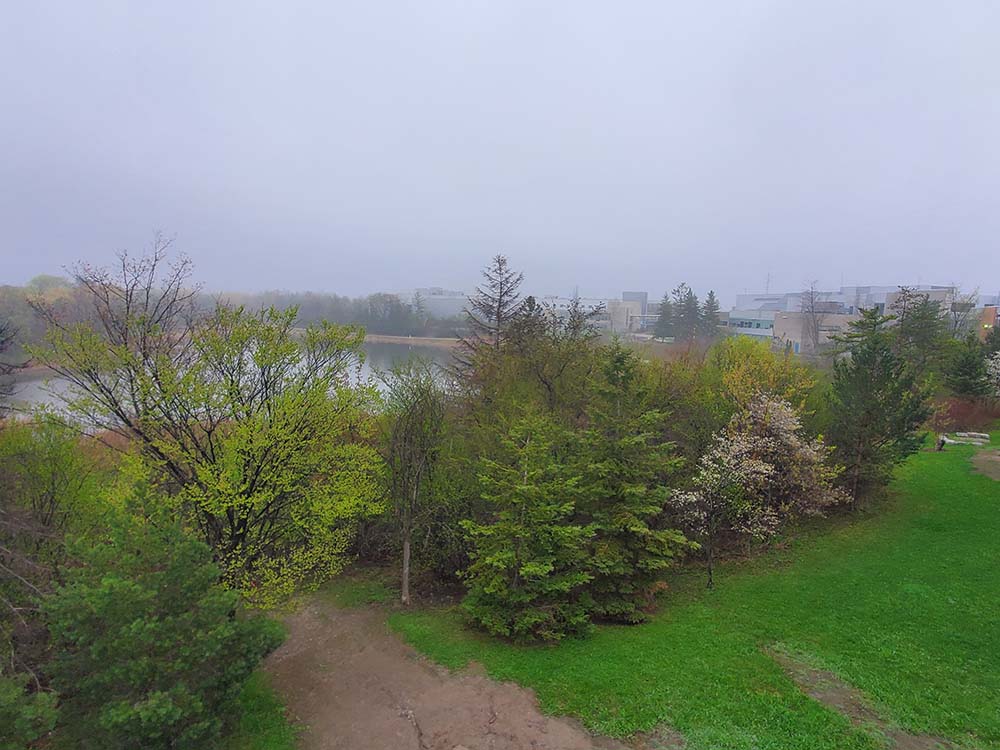
Pictured above: planting events at the Davis Campus in partnership with the Credit Valley Conservation Authority, October 2021.
Media Contact
For media inquiries, contact Sheridan’s Communications and Public Relations team.



